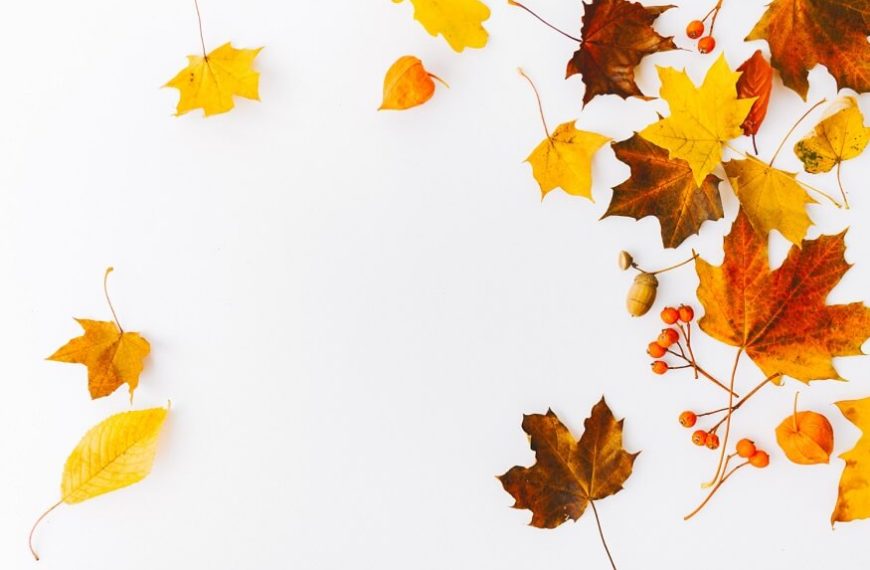There is nothing quite exquisite as the joy of walking through fallen autumn leaves.
The very same leaves that would once provide us shade in the summer.
Children are even more fascinated by these wonderful creations of Nature. Jumping in piles of leaves, collecting them and even bringing them home. The very leaves that are an essential part of the Plants that make up an essential part of the Ecosystem!
In this article, you will learn more about leaves than simply the knowledge that there is a Vein that runs across each Leaf Blade. From Parts of a Leaf to Leaf Structure, we will extend our knowledge of these wonderful components of plants, well beyond what we currently know.
Ready to take a literal ‘Leaf’ out of the Book of Knowledge, and examine its many wonderful characteristics? Let’s begin!
Parts of a Leaf
A Leaf is nothing but an intricate system of Parts, that as a Whole help carry out its functioning.
When studying leaves, it is important to bear in mind the following Parts of a Leaf.
Leaf Base
That place where the leaf base is attached to the stem? It is called the Leaf Base. Here, you will find a couple of small structures that resemble a leaf. They are called Stipules.
Petiole
The leaf blade is attached to the leaf’s base, through a structure known as the Petiole.
Note: Different species of plants have petioles of different lengths.
Lamina (Leaf Blade)
This is definitely the structure of the leaf we are most familiar with. Green in colour, it has a primary Vascular supply running through it, known as the Midrib. This is the part of the leaf, where you will find that pigment known as Chlorophyll. It might also contain Stomata, which are required for the essential process of Transpiration.
Types of Leaves
Broadly speaking, there are two types of leaves: Simple and Compound.
Simple Leaves
A simple leaf can be characterised by the presence of a single Lamina connected to the main stem by a Petiole.
Example of Simple Leaves: Guava Leaves
Compound Leaves
A tad more complex than ‘leaves found in the Building Compound’, these!
A simple description of compound leaves is, a leaf that is made of two or more Leaflets. Simply put, the compound leaf’s midrib branches into different leaflets, while being connected by a common petiole.
Example of compound leaves: Palm Leaves
Compound leaves can be further divided into ‘Palmately’ and ‘Pinnately’ Compound Leaves.
Palmately Compound Leaves
Here, the leaflets are attached to the petiole tip.
- Unifoliate. Only one leaflet. Example: Citrus
- Bifoliate: Two leaflets. Example: Balanites
- Trifoliate: Three leaflets stemming from the same point. Example: Oxalis
- Quadrifoliate: Four leaflets emerging from the same point. Example: Marsilea
- Multifoliate: Many leaflets growing from a common point. Example: Bombax
Pinnately Compound Leaves
This leaf’s midrib is divided into several leaflets. Moreover, all leaflets are connected by a single Axis.
- Pinnate. An axis on each side of the midrib.
- Unipinnate. Leaflets on each side of the axis. Example: Cassia
- Bipinnate: The central axis produces a secondary axis that bears the leaflet.
- Tripinnate. The secondary axis gives rise to a tertiary axis bearing leaflets. Example: Moringa.
- Decompound: More than three Pinnates. Example: Old coriander leaves.
- Paripinnate. No terminal leaflet. Example: Cassia
- Imparipinnate: Characterised by an odd terminal leaflet. Example: Pea.
Leaf Structure: Delving deeper into Leaf Morphology
To gain a more profound understanding of all leaves, one must understand the Science of Leaf Structure.
That being said, to understand Leaf Structure, one must undertake an exploration of the different Layers of a leaf.
The Epidermis
When you’re up close and personal with a leaf, this layer is what you first see!
The outermost layer of the Leaf, the Epidermis secretes a waxy substance known as the Cuticle. It is thanks to this very substance that Water can be retained inside the cells of the leaf. Moreover, the epidermis is also home to the Guard Cells. These are the very cells that are responsible for regulating the movement of Water, into and out of the cells.
Interesting Fact: By controlling the size of pores on the leaf called Stomata, the guard cells regulate water movement.
Mesophyll
This layer can be found when we dive down from the leaf surface, to its Middle.
Roughly speaking, the Mesophyll can be divided into two layers. The division is made vis a vis the two types of cells that are found here. The layers are duly called the Palisade, or the Spongy Mesophyll.
Note: It is in this layer that the Chloroplasts are found. These are the organelles of the cell that contain chlorophyll. And if there’s one thing most people remember from their Biology Class in school, it’s that chlorophyll is necessary for Photosynthesis!
Vascular Tissue
When we speak of this layer, we are actually referring to the Insides of the Veins of the leaves!
It is here that you will find the all-important Xylem and Phloem. It is these tissues that are responsible for the vital transportation of Water and Food.
Functions of Leaves
It is impossible to speak of leaves, without touching upon their vital functions.
Here is why leaves are ever so important to us.
- Photosynthesis. In the presence of sunlight, leaves convert Carbon Dioxide and Water, to Food and Oxygen.
- Gas Exchange. In case you were wondering what Stomata were useful for, this is one reason. They facilitate the movement of carbon dioxide Into leaves, for the aforementioned process of Photosynthesis. Similarly, they help oxygen move Out.
- Transpiration. Yet another use of Stomata. They help remove excess water, in the form of Water Vapour. This is important, as it helps cool the leaf surface and even assist in the Conduction of Water from Roots.
At EuroKids, we believe that all children should learn more about the living, natural world around them. Learning more about the intricate structure of leaves and their various functions, will help them garner a newfound sense of appreciation for these natural wonders.
















